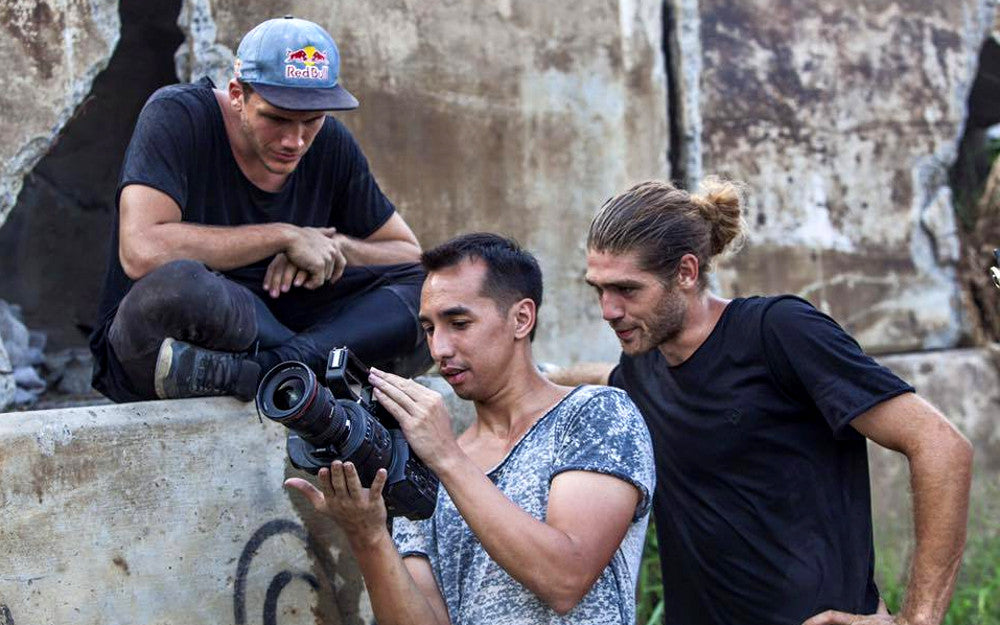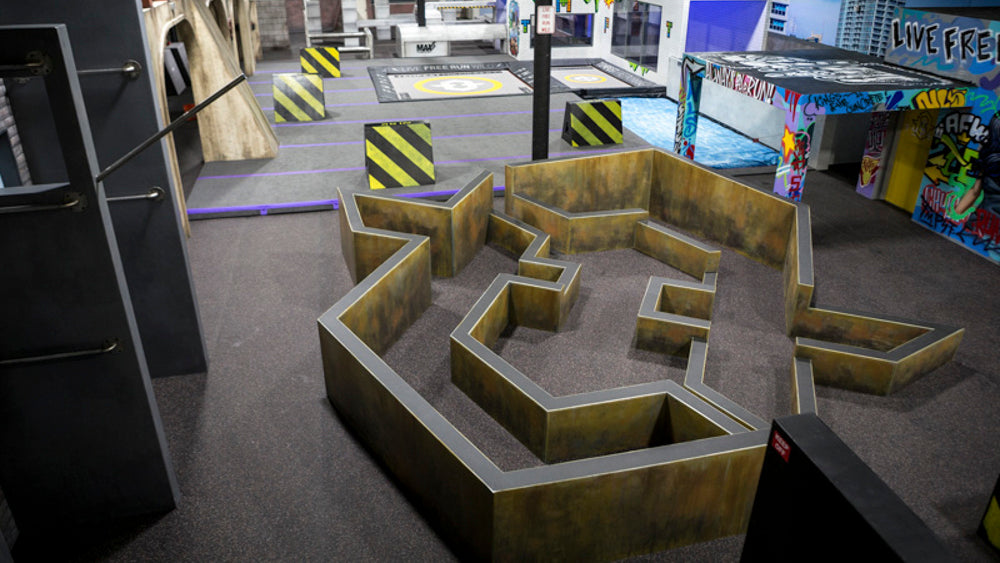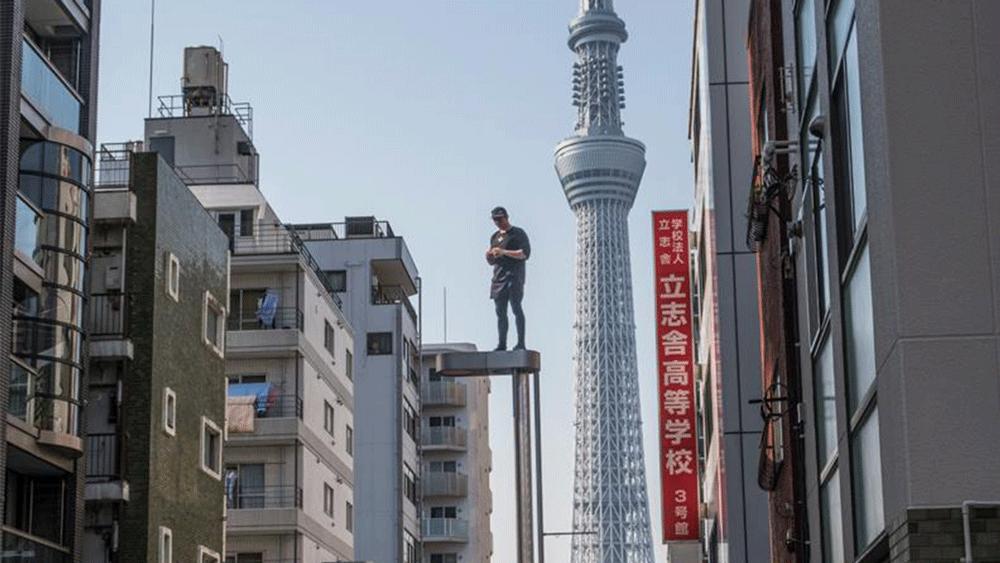The Evolution of Parkour Videos (Part 2)

I conclude my journey through the history of parkour videos by looking at what happened from 2012 onward. Things start to diverge into long and short form content, and I look at how different social media platforms changed the way we consumed parkour content.
So last week I went over how parkour videos evolved - from the pre-youtube days, right up until the end of 2011. This week is about the rest of the parkour video story, right up to the present day. Specific points along the ‘evolutionary path’ get a bit tougher to pin down after around 2012. More and more content was being produced, and people were innovating in multiple directions at once. However, there are a couple of clear threads that I can talk about.
So as I mentioned at the end of part 1, Chaps On Tour inspired a wave of new content that was longer in form than we were used to. In fact, you could almost say it started a whole new sub-genre of parkour videos: perhaps the ‘summer video’. Both teams and individuals would throw all the clips they had accumulated over the summer into one long and fun montage, broken up into sections and punctuated by raw footage of some of the more memorable antics.
There are plenty of examples of great videos in this sub-genre, like some of the work from Street Media, and Joel Eggimann. But I think the genre came full circle and reached its pinnacle with 2014’s Chaps On Tour USA - Storror’s last real venture into this style of video making. With its choice of songs and tight editing, it really captured the infinitely good feels of a parkour roadtrip with a bunch friends.
But things were changing on the technology front. Youtube was becoming more popular, and monetization of videos as an income source was becoming increasingly viable for the bigger channels. Even though videos like Chaps USA were so popular among dedicated freerunners, they weren’t efficient uses of footage in terms of maximising youtube views. The platform’s attention span was getting shorter and shorter. There was pressure to tap into more of the mainstream audience by releasing the content in shorter edits.
That’s where episodic content started to come in. But there is a bit more back story to fill in before I jump into that. While the whole ‘summer video’ trend was going on between 2011 and 2014, there was another growing trend of ‘documentary’ style edits. Like I said in part 1, one of the first videos to introduce ‘piece to camera’ narrative elements to parkour videos was The City by Farang in late 2011.
The documentary trend can be traced back to earlier in 2011, with Tim Shieff’s Livewire Goes series. It was centred around Tim traveling to spend time with high profile freerunners, and featured an audio of Tim interviewing that person whilst the video featured training clips from that trip. While a little rudimentary compared to today, it was super fresh at the time.
The Livewire Goes series eventually went on to form on of the flagship pieces of content for the Flow network, of course re-branded as Flow Goes. In its brief heyday the Flow channel was a decent hub for parkour content, with several different creators working together on various different projects. But It never really took of in the way they hoped, and the channel eventually died off. Check out the Flow Goes: Thailand episode featuring Team Farang in 2013!
Other people started to explore the documentary style of filmmaking around this time. In 2013 Storror experimented with a ‘Behind the Storrors’ format, which featured a lot more pieces to camera mixed in with their usual antics. But probably the next jump forward in terms of where the direction of content would eventually go, was Jesse La Flair and Cory DeMeyers’ Off The Edge web series in 2014.
Jesse and Cory commissioned Visive Productions to produce what was (I believe) the first of its kind. Giles bought all his experience from working on the Flow documentaries into this new episodic endeavour, essentially producing multiple mini documentaries, which contributed to the overall arc of Jesse and Cory training to compete in Santorini. This allowed Jesse’s channel to have frequent content releases over the course of a few months. I think a lot of people noticed how much further you could stretch your content with this technique, whilst keeping it entertaining to watch.
It was the documentary trend that eventually carried the first wave of feature length parkour films. In 2015 both Team Jestion's Reach the Horizon and Storror’s Supertramps Thailand were released. Both were parkour travel documentaries, both happened to be shot in Asia. Although I should say the very first feature length parkour documentary that I’m aware of was People in Motion in 2012, made by Cedric Dahl and Bennett Hoffman. Which kind of doesn’t follow this narrative, as it was produced from a more outside perspective.
2016 rolled around, and you still had episodic documentaries being produced like Storror’s Genesis - Parkour in the Holy Land. But the YouTube game was shifting slightly. Vlogging was on the rise - many of the platform’s biggest stars were growing their channels through producing frequent and longer form Vlog style content. Channels like Casey Neistat and Jake Paul. Strangely the platforms attention span was suddenly growing after getting shorter for so long, but the users were looking for a more relaxed style of content.
One of the first people to capitalise on this shift was Jason Paul. in mid 2016 he started consistently vlogging about his life, and all the parkour adventures therein. It worked - his channel has been growing consistently ever since. Of course it helps to have a really interesting nomadic lifestyle and a certain kind of personality, not to mention be willing to put in the hours of work!
Of course the Youtube landscape of today reflects this. So many freerunners put out consistent Vlog style content; Dom Di Tommaso, Storror, The Farang channel itself, Nightscape, GUP, The Motus Projects… the list could go on. The format has really tightened up too, it’s sort of becoming a science. It’s interesting to think where longer form parkour content would have gone without this shift in Youtube’s culture and algorithms.
Of course the argument exists that this ‘playing the youtube game’ is diluting the quality of the content. I definitely agree with that too an extent; the videos are somewhat tailored to perform better under what is ultimately an arbitrary website’s algorithms. Even to the level where you have to name the video in a certain way. But it’s probably a trade off worth paying.
While we all miss those long glossy summer epics, the advantages of playing the game have facilitated the growth of the sport through increased mainstream exposure. With that exposure parkour channels have grown significantly, which translates pretty directly into them having more money to make better content. It’s all part of the process. If we want more projects on the scale of Roof Culture Asia, then I think we have to do the Youtube thing - and learn to embrace it. Of course the vlogs are getting better all the time as people start to figure out the format.

But that’s not the end of the story! What about the other end of the spectrum - the shorter edits? While changes in Youtube pushed longer form parkour content in a certain direction, it was changes in Facebook and Instagram that would eventually push shorter form content to where it is today.
Rewinding back to 2011 again, a few things were going on. Freerunners were starting to get their hands on GoPros, so a lot more POV shots were making their way into videos. Some of the first people to explore making POV themed videos with GoPros were James Kingston, Will Sutton, and Giles who I mentioned earlier. I think it was Will who really pioneered the now ubiquitous ‘roll cut’ that keeps POV videos flowing.
It took a couple of years to catch on but by 2013 The POV was really becoming its own subgenre of parkour video. It was Scott Bass who seemed to really perfect the POV formula, consistently going viral with his variously themed POV projects. It proved to be a really popular format that has stuck around to this day; Storror’s two most viewed videos on Youtube are POV’s, and eight of the nine most viewed videos on Scott’s channel Ampisound are POV’s. If you're looking to go viral, it’s probably your best bet!
Another hugely influential video that came out in 2013 was Boss Mode. What set this video apart from a lot of the others of the time was the higher proportion of arty ‘B-roll’ shots. Which might sound like a negative, but it’s definitely not! The guys figured out a whole new type of flow for their video content, which gave it a very distinctive personality.
Farang continued to be champion this style over the next few years, with videos like Pasha’s Day in NY, and Jason’s Tokyo Drift. In my opinion, the perfect embodiment of this style dropped in early 2016, with Pasha the Boss. It was game changing on several levels. Foremostly because no one had ever seen movement like it before.
Now I think if Pasha the Boss came out a few years earlier then it would have been even more influential than it was. But the way we were consuming short form content was changing. Right around the same time in early 2016 the instagram video limit was raised from 15 seconds to 1 minute.
In terms of these shorter edits there had already been this graudal drift away from youtube, as it’s algorithms started to favour longer form content like I discussed earlier. The shorter form content was moving onto platforms which seemed to offer more exposure, like Facebook. After a few Facebook videos went ‘super-viral’, everyone was looking for a peice of the action. The views on Facebook are heavily inflated because of the way their view count system works, but it still seemed to be working out better than youtube.

Instagram going to one minute was the final nail in the coffin. People started working to this new one minute parameter. The one minute instagram compilation quickly became one of the most common ways the community consumed parkour content. It’s a no brainer, they’re less effort to create, and often end up reaching more people.
Of course there is still a healthy enough market for the three to four minute banger! I’d imagine there will be for quite some time. I’ve just been talking about some general trends. For example, Brewman put this out at the end of summer last year, and it’s well on its way to clocking up 100,000 views. A view count no one would even dream of 10 years ago, when the three to four minute format was being pioneered. It’s cool how you can see the influences of the generations before it, like the steezy b-roll shots and glitchy editing. But also how they’re taking it in their own direction.
- - - - -
That’s roughly how I see things anyway. It’s obviously a really complex topic and you could go way deeper into it. I think changes in social media platforms will continue to direct the flow of changes to what parkour videos look like in the future. I’m hoping that over time the sport grows to a point where feature length film projects become more common.



